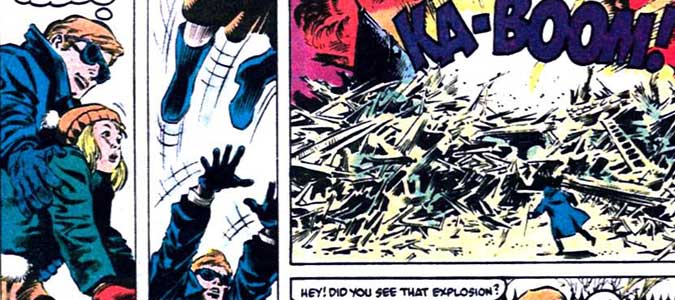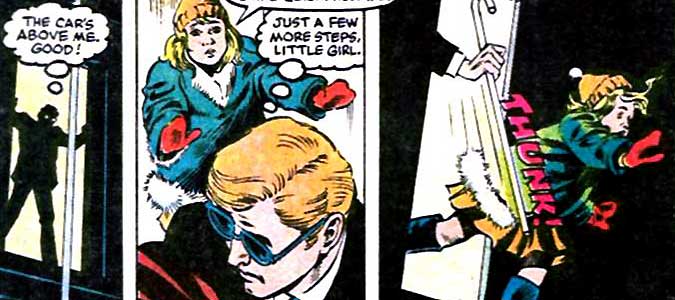This page may contain one or more affiliate links, which means that if you purchase a product through that link, I may receive compensation. The links will be identified with the text "affiliate link". Click to learn more.
Man, and I thought I hated kids.
Daredevil apparently throws a little girl down an elevator shaft in issue 209 of his comic book series. Why the sadistic plot? In actuality, an army of exploding robots disguised as little girls are programmed to seek him out and kill him. They know his secret identity and wait for him wherever he goes.
Now having to deal with the public explosions and protecting his identity, Matt Murdock finds himself in a tough spot. He runs into an old childhood friend who is in trouble. The subplot concludes the story well by having his old friend sacrifice his life to save Matt’s. It is a great story, but there is one thing that is hard to forget: Daredevil throws a girl down an elevator shaft.
If you can get past this (even though I can’t) then you will see that there is a lot more to enjoy in Daredevil 209. I have rarely read any issues of this series in the past, and thus was unaware of penciler David Mazzucchelli or inker Danny Bulanadi. Their work combined is extremely impressive, and it is a hard thing not to notice. Such a talented team should have been better known, and I am embarrassed never to have heard of them.
Putting that aside for a moment and returning to the story line, the robot girls appear in swarms while wearing a winter coat, mittens and cap. The story is reminiscent of Children of the Corn. It is a wonder how the writer was able to work any sort of humor into this dark plot.

Daredevil 209 has grabbed my attention in more ways than one. Never before had I been interested in this character (except for when the Punisher was shooting him) and the combination of simplicity and action makes the series appealing. If you were smart, then you would would check out Daredevil out pronto.

